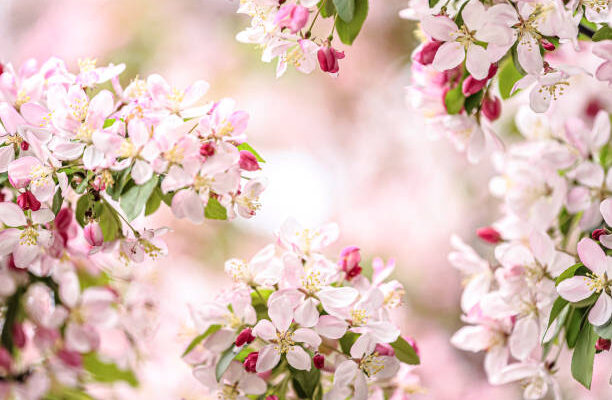When you get to SpringThe desire is to fill houses, balconies and gardens with the Flowers of MarchBeautiful and colorful.
AS Flowers of March They are pleasant in sight and symbolize a natural Renaissance.
They are also food for butterflies, bees and bees, which are currently in danger and need food through nectar and pollen.
Therefore, planting and letting our favorite flowers prosper is a gesture for ourselves and our well -being, but above all a contribution to nature.
The flowers of March: shrubs, internal plants and garden plants
In the flowering period of March, in addition to the internal plants, there is also a wealth of species between shrubs such as Magnolia, Wyster, Camelies, better known as mimosa, jeroy, almonds, lemons and some azaleas.
Magnolies
The origin of the name of the Magnolia plant derives from the name of the director of Montpellier Pierre Magnol Botanical Garden, who also invented the method, still today, of the botanical classification.
Belonging to the Magnoliaceae family, Magnolia has several countries of origin such as the United States, Korea, Japan and China, but despite these different types of climate to which it was subject, it adapts very well to the Mediterranean climate in Italy.
There are about 80 different species and its peculiarity are its very large star flowers and dark green ovoid leaves.
Flores in spring by releasing a very pleasant fragrance.
Magnolia – It is widely used as an ornamental plant and among the many species are the best known:
Soulangeana: Suitable for the cultivation of the garden, the flowers vary from white to purple and pink with petals that vanish in different shades from the outside to the inside.
Grandifora: From the southern United States, the best known with very fragrant white flowers and always green foliage.
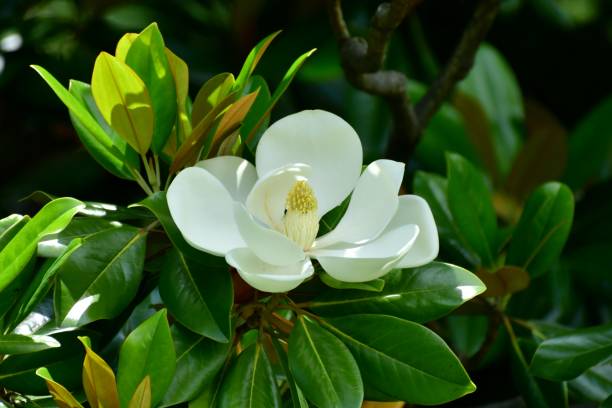
Flowers of March
Liliiflora: Its characteristics are white red-red-red-red flowers, usually the shrub reaches a height of 3 meters.
Glauca: Its flowering is mainly in summer, its flowers are in the shape of a tulip and its origins are American.
Prey: Its origin is Asian, it blooms with white flowers with a strong fragrance, but its foliage is deciduous and leaves the tree or the naked stem in winter.
Starry: Its origin is in Japan and has very fragrant flowers.
It adapts well to the Italian climate and is very cold, which makes it suitable for both the garden and the pot; If stored in an apartment, it is recommended to be kept in a sunny place.
To maintain its constant splendor and maintain its flowering, its frequency of fertilization is recommended.
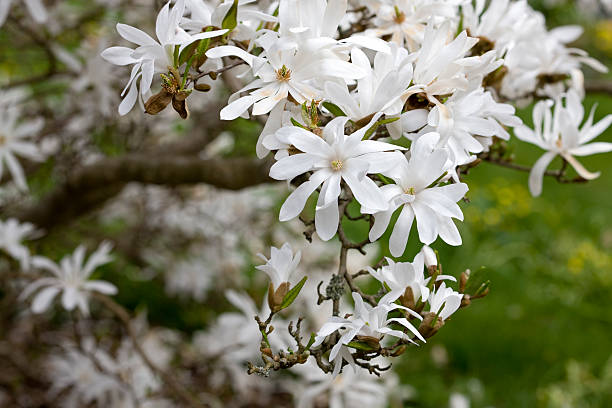
Wisteria
The name comes from the Greek and means «sweet plant».
His story was born in China, where he was called Zi Teng «Blue Vine» when he attracted the attention of Captain Welbank, who decided to bring it to Europe in 1816.
However, Linneo had also discovered this climbing plant around the eighteenth century, which was called Wistaria in honor of Kaspar Wistar, a German anthropologist.
Wyster is the name that the plant has maintained in Latin countries, that is Italy, France and Spain.
In Germany, the Germans coined a new name, connected to the old origins of their original name «Blue Vine», «Blauregen» which means «Blue Rain».
Wystery (Glycinia) has an unmistakable aroma, it is a climbing plant and decorates pergula and walls with waterfalls of purple, pink, lilac and white flowers.
A shrub that can be cultivated both in vases and in the ground has a very vigorous growth, so it is worth choosing carefully where to plant it because of its exuberance.
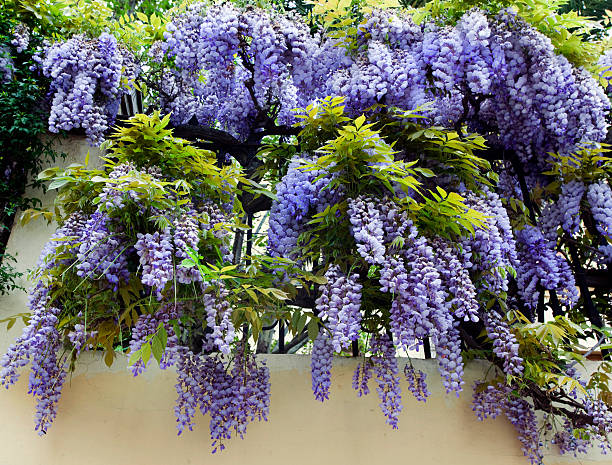
Wyster likes to be exposed to direct sunlight and, due to this predisposition, it blooms very quickly.
Those who like to embellish the terraces or gardens with this wonderful floral waterfall should remember to prune it at least twice a year at the end of the winter and during the summer in its green period to maintain its development.
Its form and its tortuous way of growing and changing its environment symbolize, in eastern philosophy, the evolution of human consciousness to influence the external world.
Giving a wister as a gift means friendship and gratitude.
Camelie
A Camélia Sinensis It is also called tea plant, in fact from its leaves it is possible to produce tea and also, steam cooked, give an oil with antiseptic properties.
Like temperatures between 15 and 30 ° C, the cold can affect the health of the plant; It is ideal for apartments because it can be repaired in the winter months, with the right amount of light in front of a window and then transferred to the garden in the summer months.
A Japanese caméliaHe is also one of the March flowers, in contrast to Sinensis, he loves a subtropical climate with rainy summers and dry winters; It is cold and dry up to -15 ° and does not like direct sunlight, which could even cause its putrefaction.

Another curiosity around this refined and elegant flower, with his delicate fragrance, is his ability to shine the woman who uses it as an ornament.
This is exactly the reason why Coco Chanel's favorite flower became, which made him his 1923 emblem, when he appeared for the first time in one of his clothes.
Acacia, better known as Mimosa
Acacia dealbata, which everyone knows like a mimosa, is the tree that is filled with fragrant yellow spots between February and March.
It has been a symbol of the women's day since 1946, when Deputy Teresa Mattei decided to give it on March 8 for the International Women's Day.
A yellow cake with sponge cake has also been invented by its cute flowers, which recall this plant in its colors and impalpability.
Originally from Australia, more precisely by Tasmania, it has also been known in Europe since the nineteenth century.
I like mild temperatures, it is very resistant to drought and does not like water too much.
Its importance is linked to the production of pollen which, although harmful to spring allergies, is of fundamental importance for the ecosystem and reproduction of bees in the process of extinction.

Fruit trees
Fruit trees include apples and cherries (sacred in Japan), damage, plums and peaches, which in March are full of small romantic and delicate flowers in shades of white-white.
For those who do not have a garden, March offers many interesting flowers for the plants and flowers of the house to compose wonderful branches.
Several March flowers – Valley Lilies, Fornie, Calêndula, Tulips, Narcissus, Roses, Jacintos, Calla Lilies, Iris, Freesias, Annemones and many other bulbous plants are in their times of maximum splendor this month, providing those who cultivate them in sensational colors.
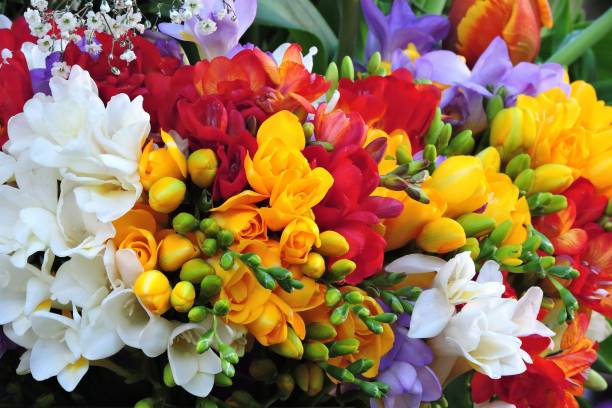
March flowers, some care tips
The plants that bloom in March are the first pioneers of spring.
However, since they are still on the verge of late winter, they risk suffering from frost.
Therefore, they need more attention and specific care, let's look at which:
First, if they return cold, they should be repaired.
Put them against the wall if they are on the terrace, place them in the house if the temperature drops zero; It shouldn't be watering with excess water.
They would be more susceptible to cold with excessively humid soil, as well as the risk of fungal diseases, since they are in a phase of reduced metabolism and consume little water.
It should not be excessively fertilized; They always clean the plant of any deposits of dry flowers.
This facilitates renewal and therefore growth.

How to cook winter radishes?

FLOWER CLOVE-MARITIMA ARMERIA: Cultivation and care

The importance of bees for pollination

The final guide on how to plant, take care and discover the origin of Coleonema

The wisdom of the garden: the influence of popular proverbs on the plantation and the care of natural flowers

Let's discover the rose and its secrets: the May plant

Friar Kiss – Balsamin Family

Amarilis – Learn to take care (Hippeastrum Hybridum)

CHANTRIERI NOC – The bat flower has flowers resemble the bats


